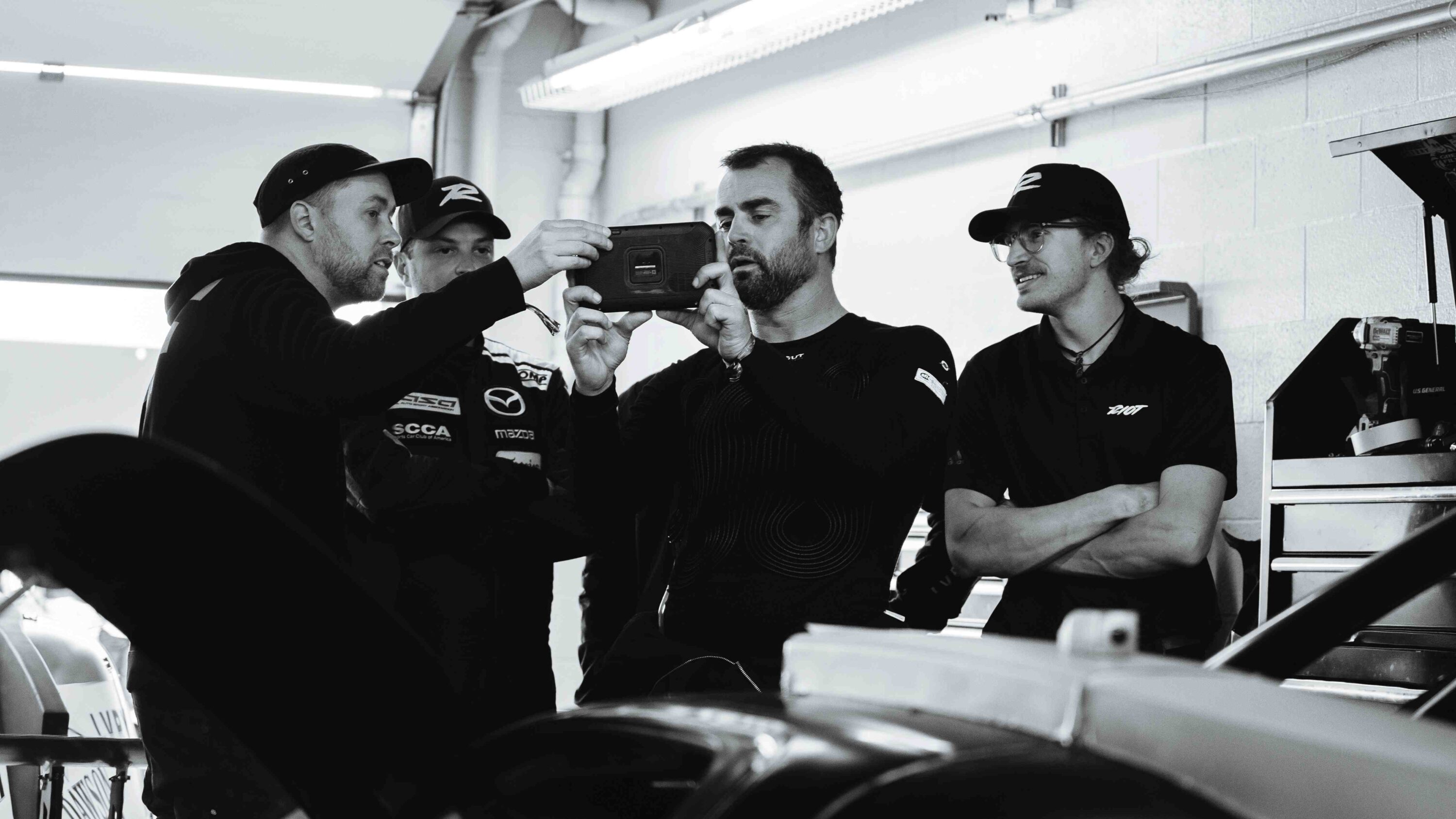Photo Credit: DAAR Creative | David Arellano
Try one gear taller to avoid the Change-of-Speed problem
We all love the sound of a revving engine. It’s beautiful, isn’t it? Exiting a corner with the engine wailing away, catching that upshift right at the track-out curb with the car on the ragged edge. It’s fantastic. Except when it’s slower.
Often, we confuse the sound of a revving engine with speed. And because of that we drive through some corners in a gear lower than we should for outright lap time improvement.
Picture a corner that you take in second gear. Now drive it in third gear. Sure, it sounds slower, and feels slower. Engine torque is not so obvious, and it can even feel a bit like it’s bogging down as you go to full throttle. But often — yes, not always — it’s faster. Why?
First, because the act of downshifting to second gear — or any gear that’s going to cause the engine to be in the upper end of its rev range — causes the car to slow. And that often leads to driving the car into the corner at a speed lower than it’s capable of. And that leads to the Change-in-Speed Problem.
What’s the Change-in-Speed Problem? It’s when you slow slightly below what the car is capable of, and then reaccelerate to get it back up to the limit. For example, let’s say your car can carry 60 MPH through the entry of a corner, but you slow it to 58 by downshifting one too many gears. Your “limit sensing” tells you the car is not quite at the limit, so you try to make up for it by giving it some throttle. As you over-slow and then compensate by reaccelerating, you cause load to transfer forward, then backward. And all that load moving around leads to less overall traction, and the car feeling like it’s beyond the limit — but it’s only because of the artificially low limit that you’ve caused. Your conclusion is that you’re driving the car at the limit, so you don’t make any changes to improve things — you keep doing something similar, and maybe even slow the car to 57 just to make sure the car is under control.
If you try running the same corner in third gear instead of second, you don’t cause as much load transfer forward, and enter the corner at the real limit of 60 MPH. The car is better balanced, and therefore it has more overall grip, so you carry that speed through the corner and begin accelerating from 60 rather than 58. And because the car is better balanced, you feel in control, at the limit.
I encourage you to try driving some laps in one gear higher than you usually do. Don’t get frustrated by the lack of acceleration or sound of a revving engine. Instead, do everything you can with your driving to make that gear work for you. My guess is that you’ll be as surprised as I’ve been when asking my coaching clients to use a taller gear. You’ll see lap times that are pleasantly surprising.
And yes, you can go back to using the lower gear in the next track session, but by then you’ll be more comfortable with a higher minimum speed, ultimately making you an even faster driver.
– Ross Bentley
/////
Ross Bentley has spent a lifetime helping drivers go faster. He’s the author of the Speed Secrets books (the best-selling racing series ever), is one of the most sought-after driver coaches in the world, and runs SpeedSecrets.com, the largest collection of driver development resources anywhere. Want more articles like this? Subscribe at RossBentley.Substack.com.







